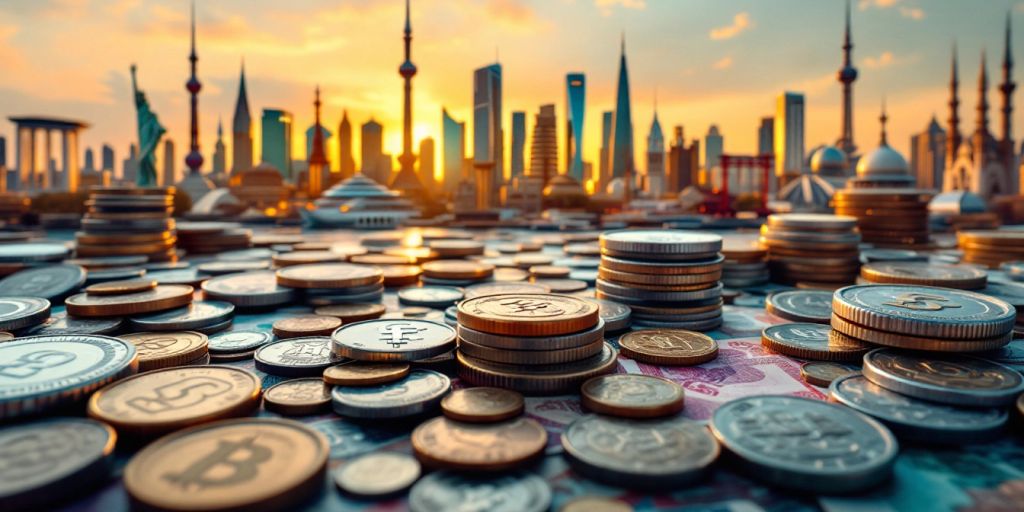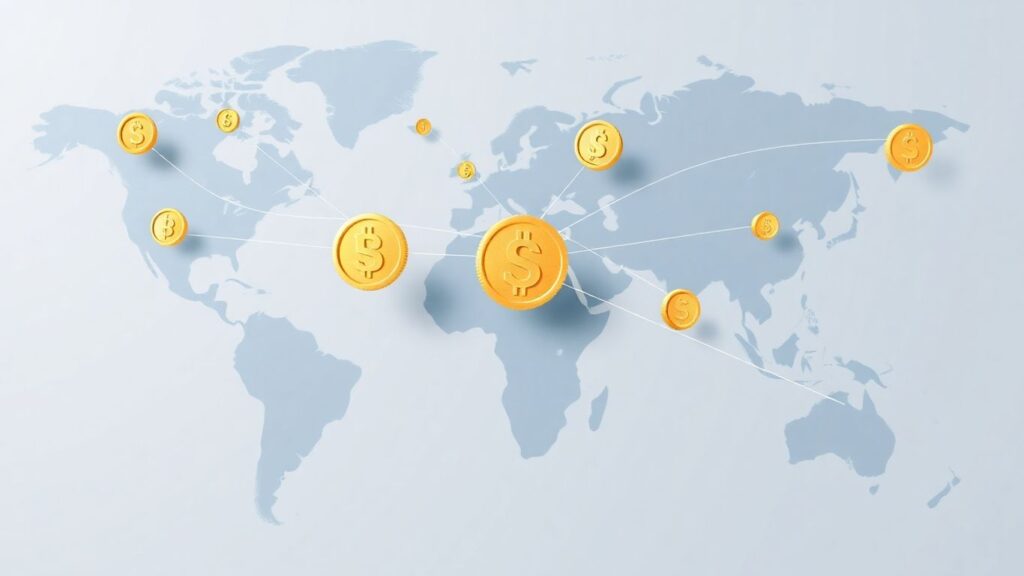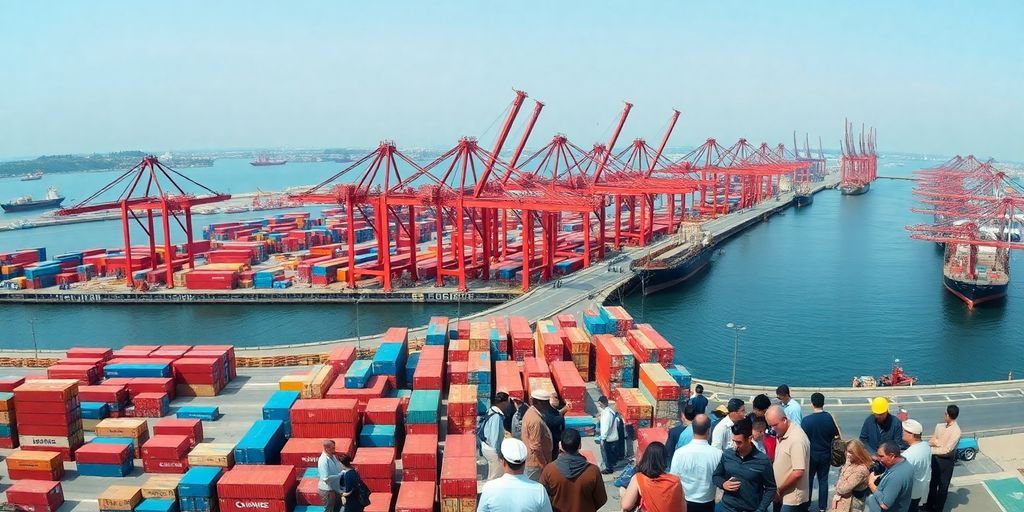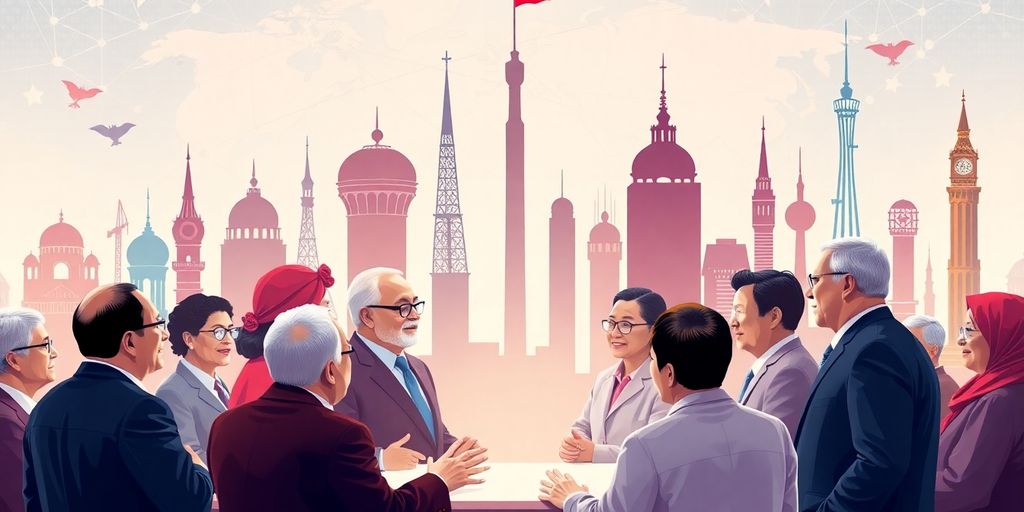Innovating Global Finance: The Role of the BRICS Development Bank in Shaping Economic Futures

The BRICS Development Bank is making waves in the world of finance. It’s not just another bank; it’s a game-changer for emerging economies. With the combined power of Brazil, Russia, India, China, and South Africa, this bank is all about funding big projects and pushing for sustainable growth. They’re not just looking at the present but are gearing up for a future where their influence on global finance is undeniable. Let’s dive into what makes this bank tick and why it’s so important.
Key Takeaways
- The BRICS Development Bank was established to support infrastructure and sustainable development projects in emerging economies.
- It aims to offer an alternative to traditional Western financial institutions, giving a stronger voice to its member countries.
- The bank has already funded numerous significant projects, focusing on sustainability and economic growth.
- Challenges remain, including geopolitical tensions and economic disparities among member countries.
- Looking ahead, the bank plans to expand its membership and continue influencing global economic policies.
The Genesis and Mission of the BRICS Development Bank

Founding Principles and Objectives
The BRICS Development Bank, formally known as the New Development Bank (NDB), was conceived in 2014 by Brazil, Russia, India, China, and South Africa. Its foundation rests on the idea of fostering cooperation among emerging economies. The main goal is to support infrastructure and sustainable development projects in BRICS and other developing countries. With an initial capital of $50 billion, it aims to address the massive investment gap in infrastructure, which is estimated to be at least $1 trillion annually.
Key Milestones in Establishment
The establishment of the NDB was a significant milestone for the BRICS nations, marking their "coming of age" in the development finance world. The bank was officially launched with the signing of an agreement in Fortaleza, Brazil, in July 2014. It quickly set up its headquarters in Shanghai, China, and appointed its first President. By 2016, the NDB had already approved its first projects, focusing on renewable energy across its member countries.
Strategic Vision for Global Finance
The strategic vision of the NDB is to complement existing international financial institutions, not compete with them. By promoting South-South cooperation, the bank seeks to give a stronger voice to developing countries in the global financial system. The NDB is also exploring partnerships with other institutions to enhance its impact and broaden its reach, paving the way for a more balanced and equitable international economic order. The evolving landscape of BRICS reflects its strategic vision and adaptability in addressing global challenges.
"The creation of the BRICS Development Bank signifies a pivotal shift towards a more inclusive global financial system, where emerging economies play a central role in shaping economic futures."
BRICS Development Bank’s Impact on Global Economic Governance
Influence on International Financial Institutions
The BRICS Development Bank, also known as the New Development Bank (NDB), has become a significant player in reshaping the international financial landscape. Challenging traditional powerhouses like the IMF and World Bank, the NDB offers an alternative source of funding for developing nations, promoting a shift towards a more equitable global economic system. The bank’s presence has prompted established financial institutions to reconsider their policies and approaches, often leading to more inclusive practices.
Role in Shaping Economic Policies
The NDB has been instrumental in influencing global economic policies by advocating for the interests of emerging economies. Through various initiatives, the bank works to ensure that the voices of developing countries are heard in international forums. This advocacy helps in crafting policies that are not only beneficial to the BRICS nations but also to other developing regions. The bank’s efforts have led to a more balanced representation of diverse economic interests on the world stage.
Contributions to Global Economic Stability
By providing financial support for infrastructure and sustainable development projects, the BRICS Development Bank plays a crucial role in enhancing global economic stability. The bank’s investments in critical sectors such as energy, transportation, and technology foster economic growth and resilience in member countries. Furthermore, by promoting sustainable practices, the NDB contributes to long-term global stability, addressing issues like climate change and resource scarcity.
The emergence of a multipolar world order presents both challenges and opportunities for global cooperation. Traditional institutions like the IMF and World Bank face pressure for reform to better represent diverse economies. Emerging economies are gaining influence, reshaping trade dynamics and forming new alliances. However, regional conflicts and cybersecurity threats complicate international relations. Climate change necessitates collaborative efforts for sustainable development, highlighting the need for shared technological advancements. As power becomes more distributed, nations must adapt their strategies to navigate this complex landscape. [a942]
Infrastructure and Sustainable Development Initiatives
Major Projects Funded by the Bank
The BRICS Development Bank has been a key player in funding significant infrastructure projects across emerging economies. These projects aim to bridge the infrastructure gap that many developing nations face, providing them with the resources to build roads, bridges, and energy facilities. Here’s a quick look at some major initiatives:
- Transcontinental Railways: Connecting remote areas to major urban centers, enhancing trade and mobility.
- Renewable Energy Plants: Investing in solar and wind farms to reduce carbon footprints.
- Smart Cities Projects: Developing urban areas with advanced technology for better living conditions.
Sustainability Goals and Achievements
The bank places a strong emphasis on sustainability, aligning its projects with global standards for environmental protection. Its initiatives are not just about building infrastructure but also about creating a sustainable future. Some key achievements include:
- Reduction in carbon emissions through green energy projects.
- Implementation of eco-friendly construction practices.
- Support for projects that promote biodiversity and reduce pollution.
Partnerships with Emerging Economies
The BRICS Development Bank has formed strategic partnerships with various emerging economies to support their infrastructure and development needs. These collaborations are essential for fostering economic growth and achieving sustainable development goals. Notable partnerships include:
- Joint ventures with local governments to co-fund infrastructure projects.
- Alliances with private sectors to leverage expertise and resources.
- Engagements with international organizations to align with global development standards.
The BRICS Development Bank’s commitment to infrastructure and sustainable development is reshaping the economic landscape of emerging nations, paving the way for a more connected and environmentally conscious future.
These initiatives by the BRICS Development Bank not only address the immediate infrastructure needs but also ensure that development is sustainable and inclusive, considering the long-term impact on the environment and society. The bank’s efforts are in line with global movements like the Belt and Road Initiative, which also emphasizes sustainable growth and international cooperation.
Challenges and Opportunities for the BRICS Development Bank

Internal and External Challenges
The BRICS Development Bank, known formally as the New Development Bank (NDB), faces a range of challenges both from within and outside its member countries. Internally, the bank must navigate the diverse political and economic landscapes of its member nations—Brazil, Russia, India, China, and South Africa. Each country has its own set of economic priorities and political dynamics, which can sometimes lead to conflicting interests. Externally, the bank competes with established financial institutions like the World Bank and the IMF, which have long-standing influence and resources. These challenges are compounded by global economic fluctuations and geopolitical tensions that can affect member states differently.
Opportunities for Growth and Expansion
Despite these challenges, the NDB is positioned to seize numerous opportunities for growth. The bank can capitalize on the increasing demand for infrastructure development in emerging markets, which are often underserved by traditional financial institutions. By focusing on sustainable development projects, the NDB can also align itself with global priorities such as the United Nations’ Sustainable Development Goals (SDGs). Moreover, as the world shifts towards a multipolar economic order, the NDB has the potential to expand its influence by welcoming new members and forging strategic partnerships with other international organizations.
Strategies for Overcoming Obstacles
To overcome its challenges, the BRICS Development Bank must adopt a set of strategic measures. Firstly, enhancing cooperation among member countries can lead to more cohesive decision-making processes. Secondly, diversifying its project portfolio to include a mix of infrastructure, renewable energy, and technological innovation projects can mitigate risks associated with market volatility. Lastly, strengthening its financial mechanisms, such as the Contingent Reserve Arrangement, can provide a safety net for member countries during economic downturns. By implementing these strategies, the NDB can not only overcome its current obstacles but also position itself as a key player in the future of global finance.
"The road ahead for the BRICS Development Bank is filled with both hurdles and opportunities. By embracing its unique position and fostering collaboration among its diverse members, the bank can chart a course towards a more inclusive and sustainable global economy."
The Future of Global Finance and the BRICS Development Bank
The BRICS Development Bank is poised to play a significant role in shaping the future of global finance. With its focus on funding infrastructure and sustainable development, the bank is set to influence economic policies across emerging and developing economies. The bank’s efforts could lead to a shift in global economic power dynamics, challenging the dominance of traditional Western financial institutions.
Potential for Expanding Membership
The potential for expanding the membership of the BRICS Development Bank is an exciting prospect. By welcoming new members, the bank could increase its capital base and extend its reach. This expansion could lead to greater collaboration and resource sharing among member countries, enhancing the bank’s ability to fund large-scale projects.
Long-term Goals and Vision
Looking ahead, the BRICS Development Bank aims to establish itself as a leader in sustainable development financing. Its long-term goals include supporting projects that align with the United Nations’ Sustainable Development Goals (SDGs) and promoting economic growth that is both inclusive and environmentally friendly. The bank’s vision is to create a more balanced and equitable global financial system that benefits all nations.
The BRICS Development Bank stands at the crossroads of opportunity and challenge, with the potential to redefine economic futures through strategic partnerships and innovative financing solutions.
Collaborations and Alliances in the Global Arena
Partnerships with Other International Banks
The BRICS Development Bank has been actively engaging with various international banks to broaden its impact and reach. These partnerships are not just about funding but also sharing expertise and resources. For instance, collaborations with the Asian Infrastructure Investment Bank (AIIB) and the African Development Bank have been pivotal in co-financing projects that span across continents. Such alliances are crucial for pooling resources and expertise, ultimately leading to more robust financial solutions.
Collaborative Efforts with Member Nations
Each BRICS nation brings something unique to the table, and their collaborative efforts are a testament to this diversity. From infrastructure development in India to technological advancements in China, the bank leverages the strengths of its member countries to drive projects forward. An interesting approach has been the focus on sustainable development, where projects are designed to meet environmental standards while promoting economic growth.
Impact on Global Trade and Investment
The influence of the BRICS Development Bank extends beyond just financial aid. By promoting trade agreements and facilitating investments, the bank plays a significant role in shaping global trade dynamics. Investment initiatives have been particularly successful in emerging markets, where the bank’s involvement has led to increased economic activity and job creation. These efforts not only boost the economies of member nations but also contribute to a more balanced global economic landscape.
The BRICS Development Bank stands as a beacon of cooperation in a world often divided by economic disparities. Its alliances and partnerships are not just strategic but also a step towards a more inclusive global economy.
Conclusion
So, looking at the big picture, the BRICS Development Bank is like a new player in the global finance game, and it’s shaking things up. These countries, with their growing economies, are not just sitting on the sidelines anymore. They’re stepping up, creating new ways to fund projects that matter, like infrastructure and sustainable development. Sure, there are bumps in the road, like any big change, but the potential here is huge. The BRICS nations are showing that they can work together to tackle big challenges, and that’s something the world needs right now. It’s not just about money; it’s about creating a fairer, more balanced global economy. And who knows? Maybe this is just the beginning of a new chapter in global finance.
Frequently Asked Questions
What is the BRICS Development Bank?
The BRICS Development Bank, also known as the New Development Bank (NDB), was created by Brazil, Russia, India, China, and South Africa to support infrastructure and sustainable development projects in BRICS and other emerging economies.
Why was the BRICS Development Bank established?
The bank was set up to provide resources for infrastructure and sustainable development, giving emerging and developing countries a bigger say in global finance.
How does the BRICS Development Bank impact global finance?
The bank influences global finance by offering an alternative to traditional financial institutions, supporting projects that boost economic growth and stability in developing regions.
What are some projects funded by the BRICS Development Bank?
The bank funds a variety of projects, including renewable energy, transportation infrastructure, and water management, to promote sustainable development and economic growth.
What challenges does the BRICS Development Bank face?
The bank faces challenges like political differences among member countries, economic instability, and the need to balance rapid growth with sustainability.
What is the future outlook for the BRICS Development Bank?
The future looks promising as the bank plans to expand its membership and increase its influence in global finance, aiming for long-term sustainable growth.








Responses